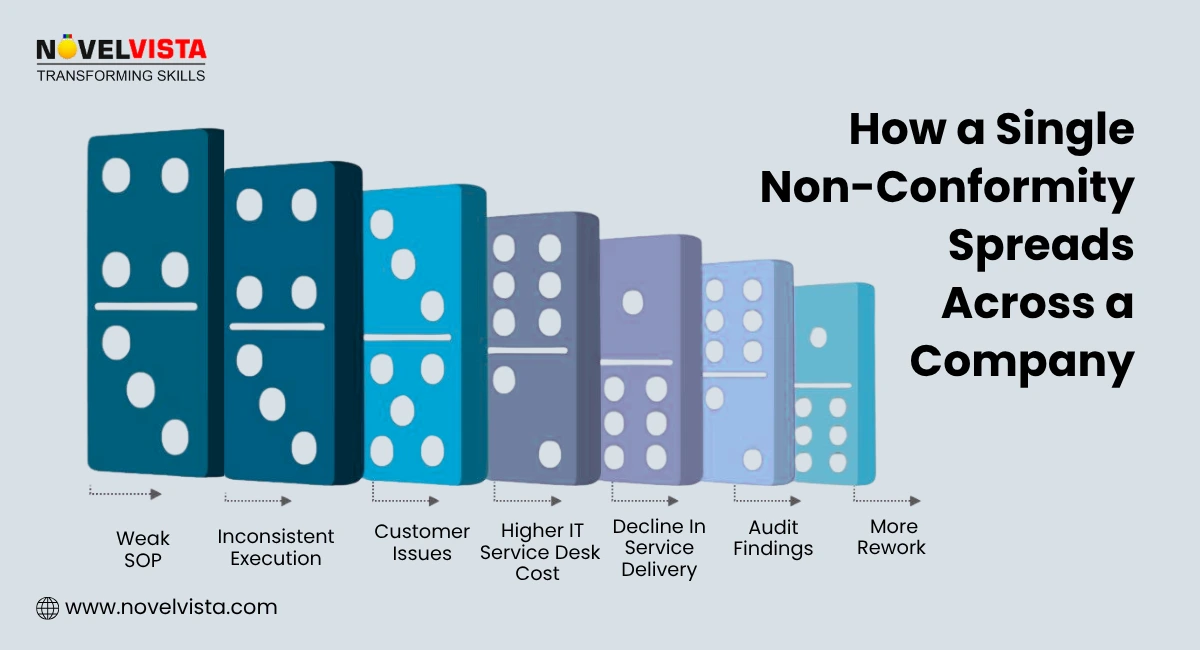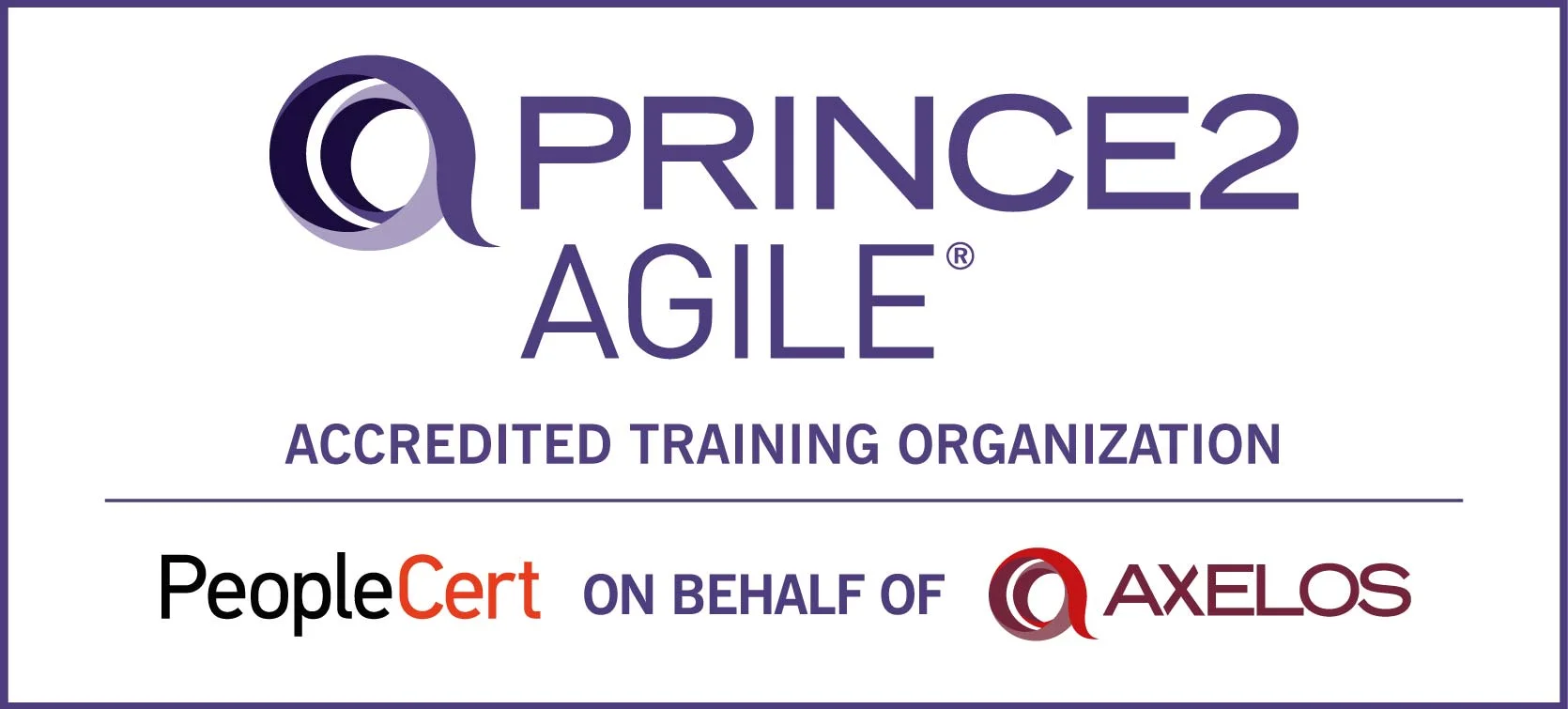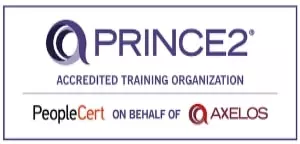- Major vs. Minor ISO 9001 Non-Conformities Explained
- Most Common ISO 9001 Audit Findings
- Root Causes Behind ISO 9001 Non-Conformities
- How Lead Auditors Identify and Classify Audit Issues
- Corrective Action Steps for ISO 9001 Non-Conformities
- Lead Auditor Best Practices for Effective ISO 9001 Audits
- Continuous Improvement After ISO 9001 Non-Conformities
- Real Examples of ISO 9001 Non-Conformities and Their Resolution
- Conclusion: Strengthening Quality Through Better Audit Insights
Let’s skip the usual textbook talk for a moment. Think about the last time someone in your team said, “We’ve always done it this way,” and everyone just rolled with it. That’s exactly how ISO 9001 non-conformities slip in — quietly, without warning, until an audit day puts them right under the spotlight.
This blog walks you through the most common gaps, what causes them, how auditors classify them, and the practical steps companies use to fix them. The idea is simple: make ISO 9001 audits easier to understand and help you see how small process improvements can create a big difference in quality.
Major vs. Minor ISO 9001 Non-Conformities Explained
Before anyone tries to fix an issue, they need to know what type of issue it actually is. ISO 9001 splits audit gaps into two levels, and the difference is pretty straightforward.
Major ISO 9001 Non-Conformities
- Show a complete failure to meet a requirement.
- Affect the ability to meet customer or compliance expectations.
- Can pause or delay certification until corrected.
- Example: No internal audit process in place, or zero evidence of monitoring activities.
Minor ISO 9001 Non-Conformities
- The system is there, but something is not followed consistently.
- Points to weakness, not a full breakdown.
- Example: A procedure is updated, but a team still uses the old format.
These classifications are based on how auditors assess impact and risk during real ISO 9001 audits. We shaped this explanation using common scenarios seen across multiple sectors, making it easier to understand how each type affects certification and daily operations.
Most Common ISO 9001 Audit Findings
Some ISO 9001 audit findings keep showing up everywhere — manufacturing, IT, healthcare, logistics, you name it. These issues reveal where companies usually struggle with consistency. Common ones include:
- Poor document control: Old SOPs, missing version details, or employees following outdated instructions.
- Incomplete or missing records: Work is done, but there’s no proof to show it.
- Weak management review data: Inputs like risks, customer feedback, internal audit results, or performance metrics are not updated or discussed properly.
- Unclear ownership of processes: Teams do the work, but no one knows who is responsible for the results.
- Shallow internal audits: Audits cover only a few areas or don’t go deep enough to confirm effectiveness.
- Customer complaints closed without real fixes: The root cause stays untouched, so the issue returns again and again.
These findings are not theoretical; they appear repeatedly in audits across manufacturing plants, service companies, IT teams, and government departments. Highlighting such real patterns shows readers what auditors actually witness in day-to-day assessments, making the guidance relatable and easier to apply. This practical view reinforces the message that improving these areas directly increases audit readiness and reduces repeat findings.
Root Causes Behind ISO 9001 Non-Conformities

Most ISO 9001 non-conformities don’t start with one big mistake. They grow from small habits and unresolved issues that build up over time. Common root causes include:
- Procedures that don’t match actual work: Teams follow shortcuts, but documents never get updated.
- Training gaps: Employees learn tasks from each other, not from approved processes.
- Processes that don’t connect well: Departments work in silos, causing miscommunication or delays.
- Quick fixes instead of real solutions: Actions are taken just to close the issue, not to remove the true cause.
- Weak communication: People assume someone else is handling updates or responsibilities.
To find the actual reason behind a problem, teams often use simple analysis tools such as:
- 5 Whys → keeps digging until the real cause appears.
- Fishbone Diagram → breaks the problem into categories for easier investigation.
These help teams avoid surface-level fixes and focus on solutions that prevent the issue from happening again.
How Lead Auditors Identify and Classify Audit Issues

A good audit depends on how well the evidence is checked. Lead auditors follow a structured and neutral approach to confirm if a process works the way the standard expects. Their actions usually include:
- Reviewing documents to confirm alignment with ISO 9001 requirements.
- Interviewing employees to understand real working practices.
- Observing tasks to compare actual behaviour with documented processes.
- Verifying data to check if reports match day-to-day activities.
- Classifying issues based on evidence, not assumptions.
Throughout the process, the lead auditor's best practices keep the audit fair and objective. Auditors avoid leading questions, listen carefully, and ensure every finding is supported by clear proof. This makes the final report dependable and helps teams act quickly on real gaps.
Also Read: How to Design an Effective ISO 9001 Audit Program?
Corrective Action Steps for ISO 9001 Non-Conformities
Fixing ISO 9001 non-conformities is not about rushing to close the audit report. It’s about following a clear and simple flow that actually strengthens the QMS. Most organizations follow these steps:
- Identify the finding clearly: The team understands what went wrong, where it happened, and how it affects the requirement. Clarity here avoids guesswork later.
- Do a proper root cause analysis: Tools like 5 Whys or Fishbone help the team go beyond symptoms and identify the deeper reason behind the problem.
- Create an action plan: The plan lists tasks, responsible people, dates, and expected results. Everyone knows what needs to be done and why it matters.
- Implement the corrective action: This means updating documents, training people, improving processes, or fixing operational gaps.
- Verify and close the action: The team checks if the fix actually works. This verification step confirms that the issue won’t return.
Every step needs proper records. Without strong documentation, ISO 9001 non-conformities stay open, or worse — repeat during the next audit cycle.
Lead Auditor Best Practices for Effective ISO 9001 Audits
Strong audits don’t happen by chance. They come from structure, clarity, and consistent habits. These lead auditor best practices help auditors run clean and reliable audits:
- Clear planning and scoping: Auditors review past ISO 9001 audit findings, organizational changes, and risk areas to build a smart audit plan.
- Asking simple, open questions: This helps them understand how the process works instead of forcing yes/no answers.
- Checking both documents and actions: Auditors confirm that what’s written is what’s actually done.
- Building trust with the team: People share honest inputs when auditors stay calm, respectful, and curious.
- Reporting findings with clarity and evidence: Every point in the report connects to an ISO requirement and has proof, leaving no confusion for the organization.
These habits are followed by successful lead auditors who have years of experience across multiple audit cycles. Sharing these practices demonstrates what effective auditing looks like in real environments, making the guidance dependable and based on established industry behavior. This strengthens the article’s authority and gives readers a clear picture of how strong audits actually function.
Continuous Improvement After ISO 9001 Non-Conformities
Once the non-conformity is fixed, the real game begins — making sure it never returns. Continuous improvement helps organizations move from “let’s fix this gap” to “let’s make our system stronger every day.”
Companies usually maintain improvement by:
- Doing follow-up checks: Teams revisit areas where ISO 9001 non-conformities were found to confirm long-term effectiveness.
- Tracking process performance: Metrics like customer complaints, defect rates, or lead times highlight if the fix is working.
- Refreshing training and awareness: Updated processes only work when people understand how to follow them.
- Doing internal audits with better depth: Stronger internal audits reduce repeated ISO 9001 audit findings and make certification audits easier.
This kind of follow-through turns simple fixes into long-term improvements and builds a QMS that grows stronger year after year.
Download: ISO 9001 Non-Conformity Correction Toolkit
Fix non-conformities with confidence. Get ready-to-use templates, RCA worksheets, and closure checklists that make audits stress-free.
Real Examples of ISO 9001 Non-Conformities and Their Resolution
Here are a few simple examples that show how issues appear and how auditors help teams resolve them:
Example 1: Outdated SOP Used on the Shop Floor
- Issue: The team used a procedure from last year that didn’t match the updated process.
- Root Cause: Document control wasn’t updated in time.
- Fix: Updated SOP issued, older version removed, and staff trained.
- Result: Better clarity and fewer errors in daily operations.
Example 2: Customer Complaints Closed Without Investigation
- Issue: Complaints were marked resolved, but had no root cause analysis.
- Root Cause: Staff assumed quick fixes were enough.
- Fix: Proper RCA training given and a new complaint-handling checklist created.
- Result: Complaints reduced because real issues were fixed.
Example 3: Weak Internal Audit Coverage
- Issue: Internal audits focused only on paperwork, not actual practices.
- Root Cause: Auditors lacked clear guidance and confidence.
- Fix: Refresher training and a new internal audit plan added.
- Result: Stronger ISO 9001 audit findings and better QMS awareness across the team.
These examples show how lead auditor best practices guide teams, uncover deeper gaps, and build solutions that prevent recurrence.
Conclusion: Strengthening Quality Through Better Audit Insights
ISO 9001 non-conformities are not roadblocks — they’re signals that show where a system can grow stronger. When teams understand the types of issues, their root causes, and how auditors classify them, it becomes easier to fix gaps that slow down performance. With the right actions, clear documentation, and consistent follow-up, every finding turns into an opportunity to improve the entire QMS.
Next Step
If you want to master how audits really work and learn how to handle ISO 9001 non-conformities with confidence, consider upskilling with NovelVista’s ISO 9001 Lead Auditor Certification. The training helps you understand real audit situations, strengthens your practical skills, and teaches you industry-level audit techniques used by experienced professionals. It’s a clear step toward leading audits effectively and helping organizations build a stronger, more reliable quality management system.
Frequently Asked Questions
Author Details

Mr.Vikas Sharma
Principal Consultant
I am an Accredited ITIL, ITIL 4, ITIL 4 DITS, ITIL® 4 Strategic Leader, Certified SAFe Practice Consultant , SIAM Professional, PRINCE2 AGILE, Six Sigma Black Belt Trainer with more than 20 years of Industry experience. Working as SIAM consultant managing end-to-end accountability for the performance and delivery of IT services to the users and coordinating delivery, integration, and interoperability across multiple services and suppliers. Trained more than 10000+ participants under various ITSM, Agile & Project Management frameworks like ITIL, SAFe, SIAM, VeriSM, and PRINCE2, Scrum, DevOps, Cloud, etc.
Course Related To This blog
ISO 9001:2015 Lead Auditor Training and Certification
Confused About Certification?
Get Free Consultation Call









